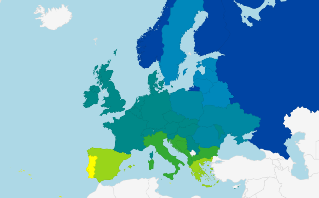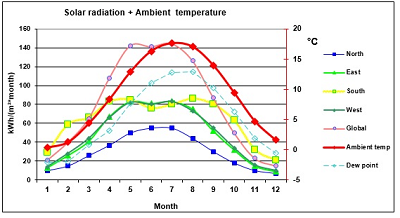Climate Information
The design of an energy efficient building cannot be decoupled from the climate in which the building is located. Differences in temperatures, humidity, wind, sunshine and more all have an affect on building performance. In this light, PassREg is producing solutions and guidance across Europe.
Component guidelines for cost-optimal Passive Houses
 An interactive map, developed by the Passive House Institute, now provides a detailed overview of components required to achieve a Passive House or EnerPHit building in regions across Europe. A simply mouseover displays each country's climate zone(s). A click will reveal detailed component guidelines for the respective region.
An interactive map, developed by the Passive House Institute, now provides a detailed overview of components required to achieve a Passive House or EnerPHit building in regions across Europe. A simply mouseover displays each country's climate zone(s). A click will reveal detailed component guidelines for the respective region.
These guidelines address building envelope and building services components, including renewable energies. Links to realised examples provide insight into successful solutions and contact details of the design team involved. With this information at hand, you can start planning your Passive House with the PHPP. The map is available on Passipedia.
Verified climate data for a Beacon cities and regions

The Passive House Planning Package (PHPP) is the cornerstone of Passive House design. In calculating energy balances, the tool makes use of local climate data. As such, having verified local climate data are extremely important. Within PassREg, new climate data sets have been generated and verified for all beacon locations. Climate data availability and suitability for PHPP calculations have now been documented for all countries represented with PassREg (Belgium, Bulgaria, Croatia, Germany, Italy, Latvia, Netherlands, and Wales). General recommendations on how to access and treat climate data for energy calculations will act as a helpful guideline for PH designers.
download climate data report (pdf, 2.1MB)
